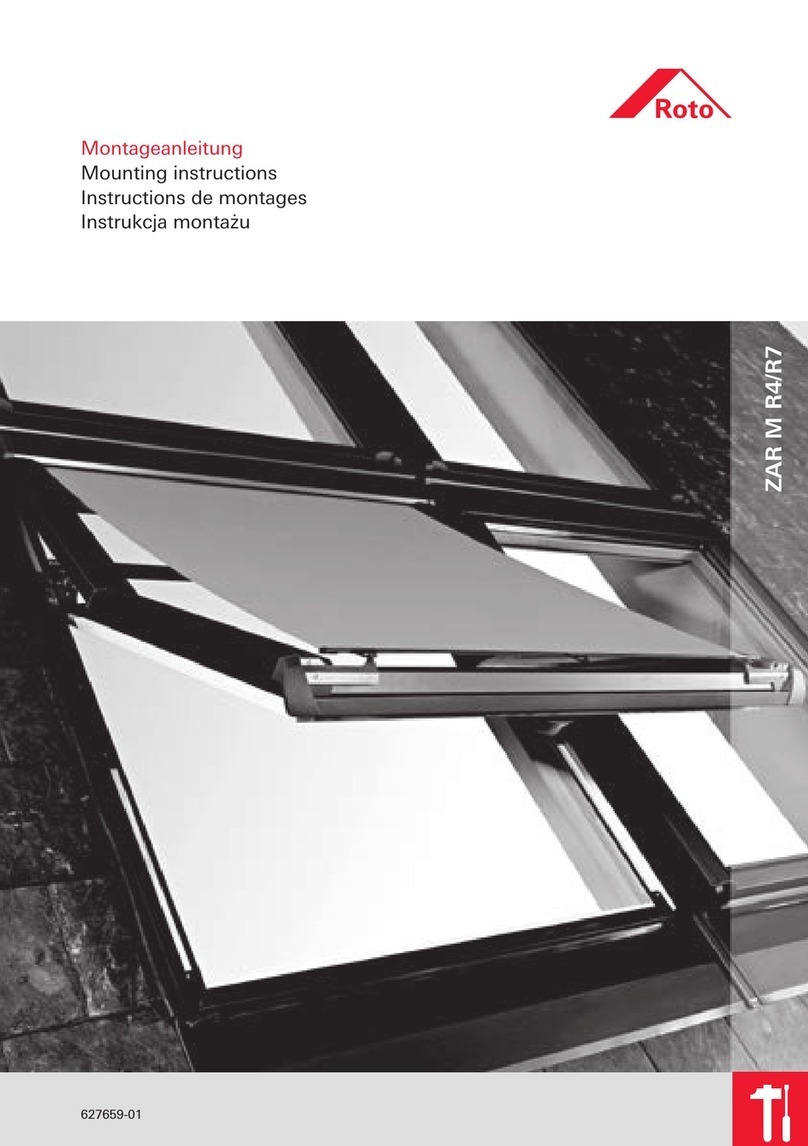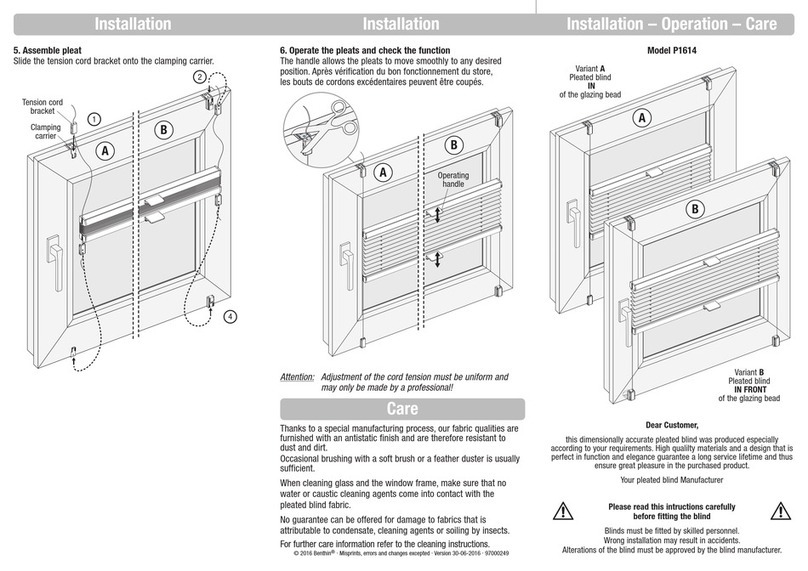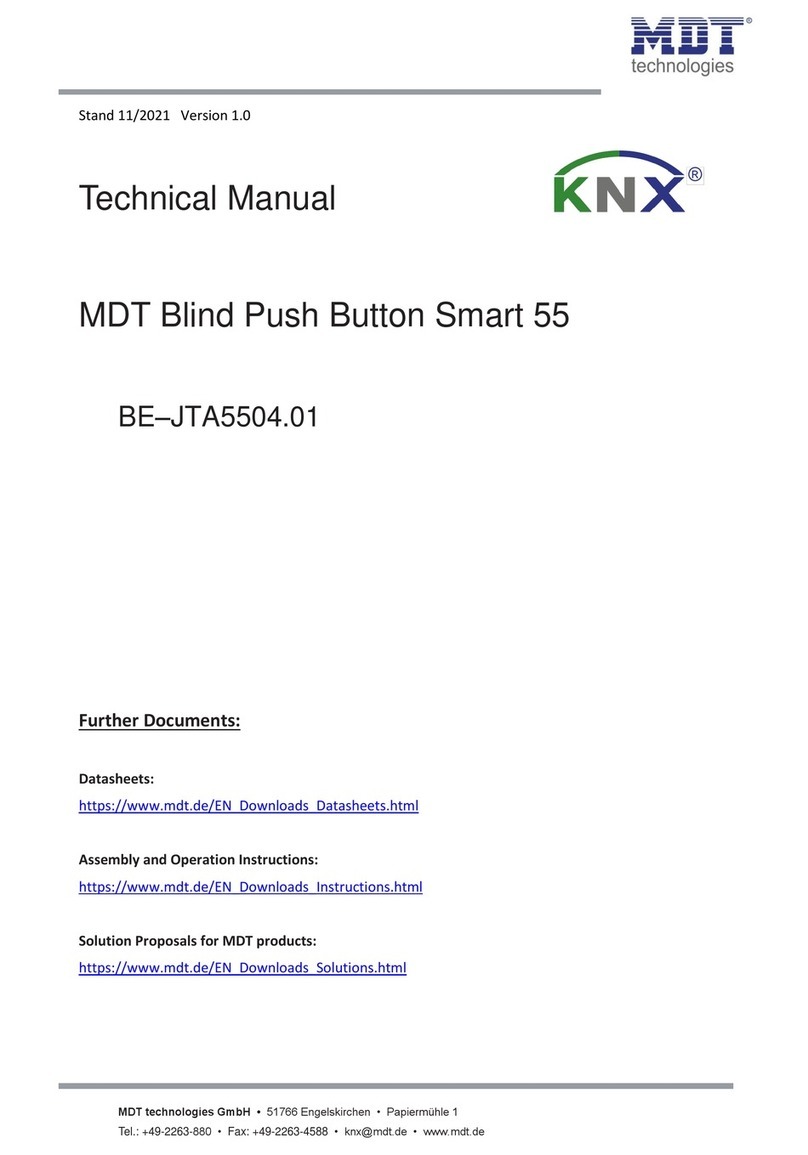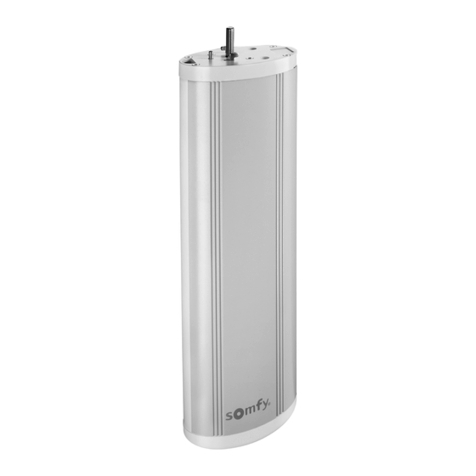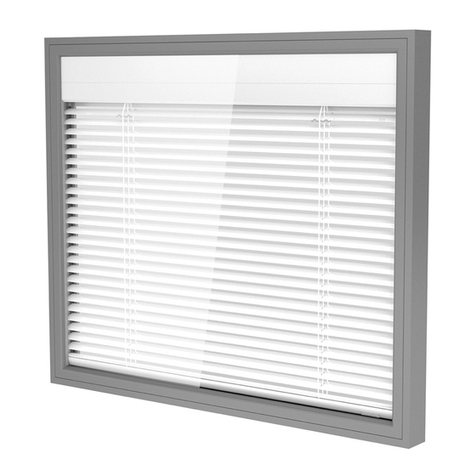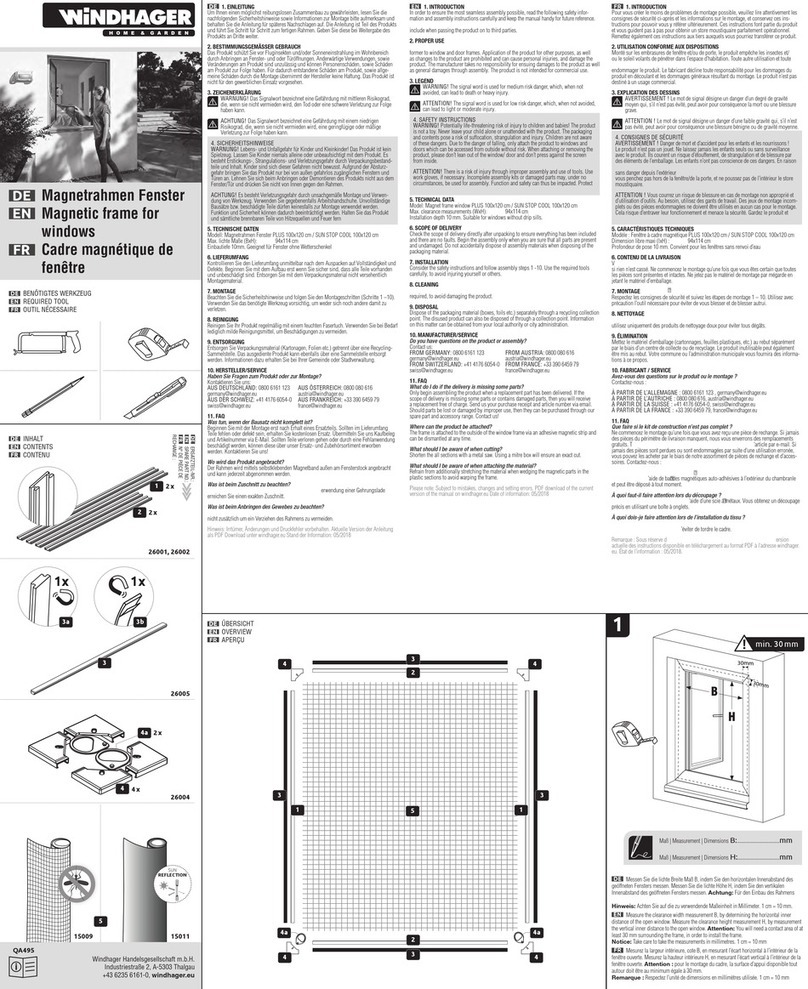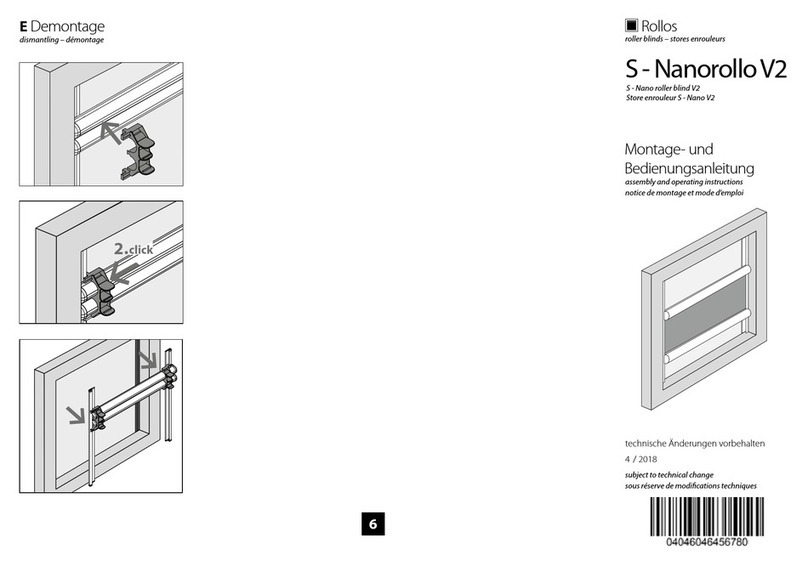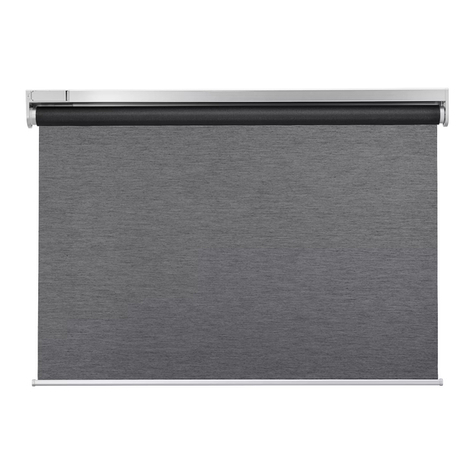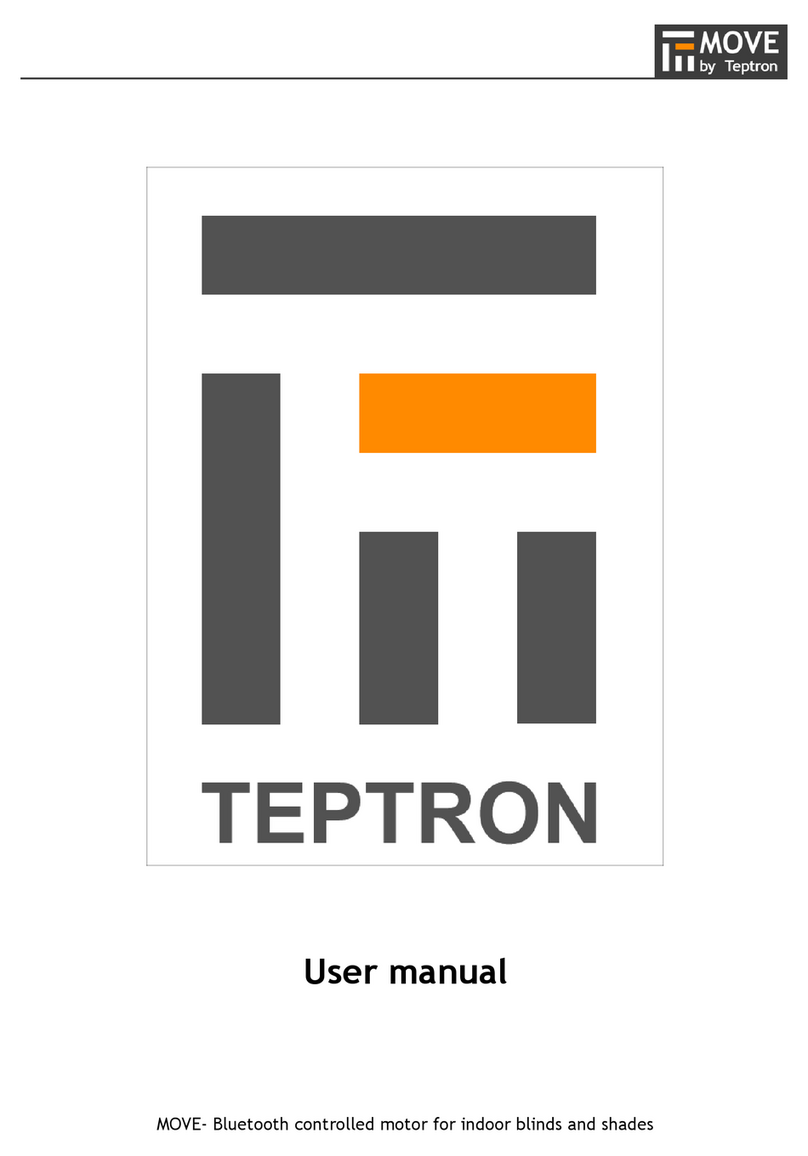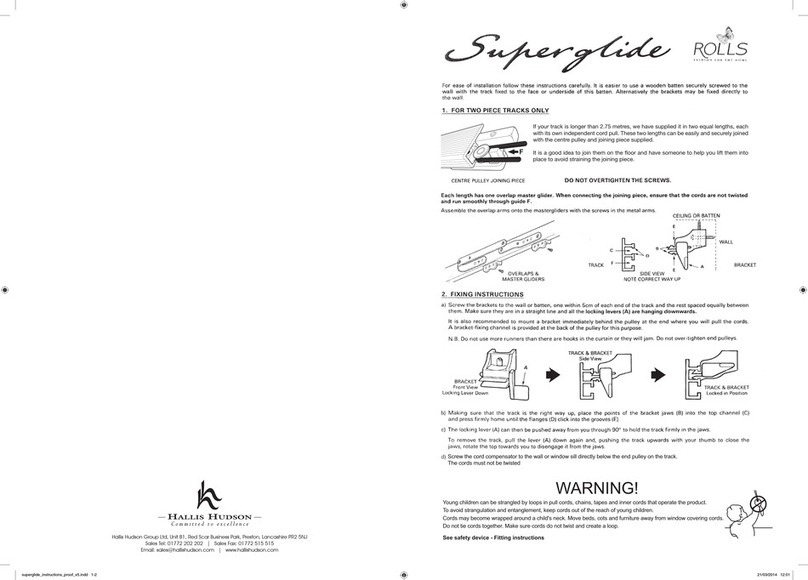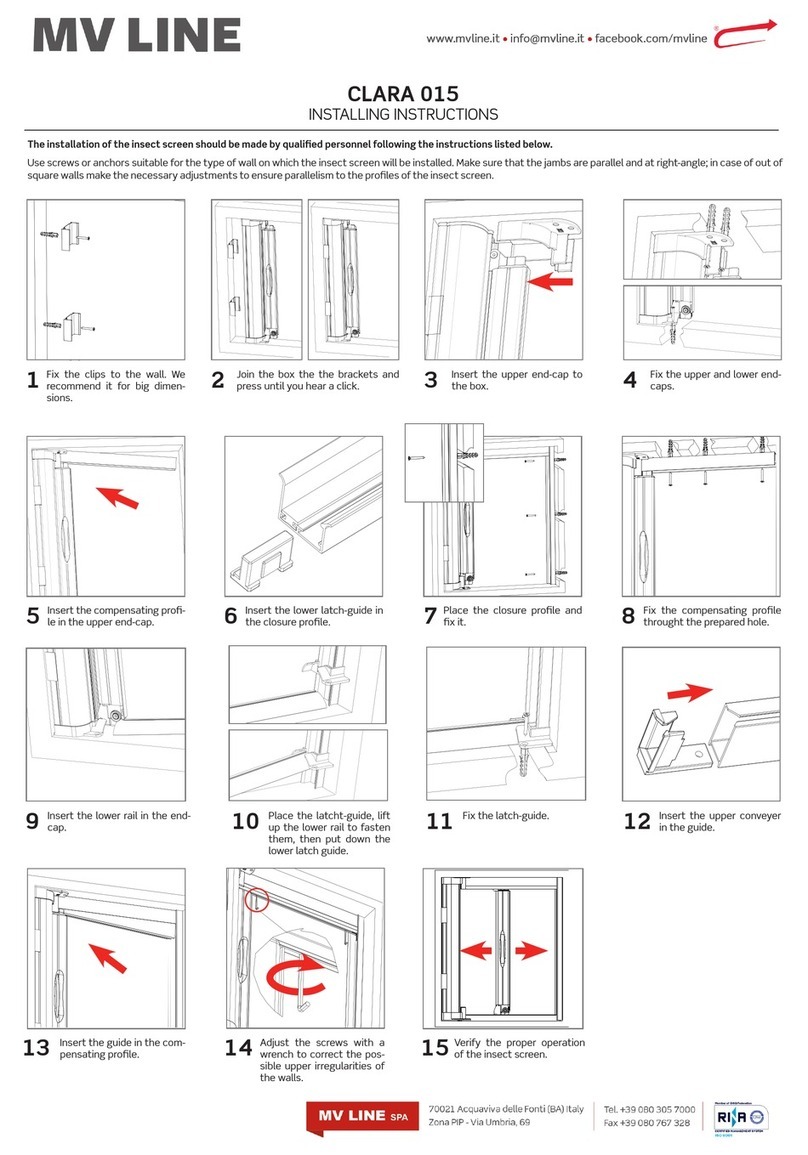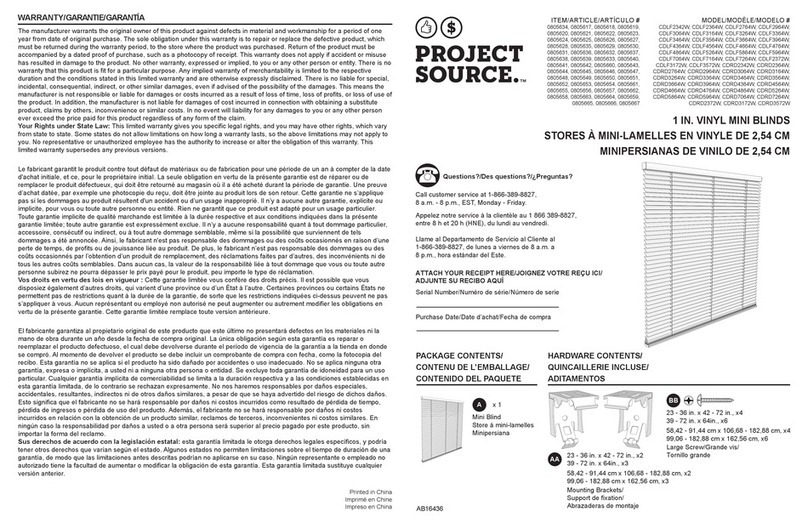
technical features
3
1.
A mechanical end-stop incorporated within the head-rail, ensures a safety stop of the blind in
the lower position. The entire kit is contained within the spacer bar frame thereby ensuring the
hermetic seal of the unit.
Height 300 ~ 2.500 mm
Width 420 (320 with double head rail system) ~ 2.200 mm
Maximum area 5,5 sqm
Blind stack height 1% blind height + 65 mm (+ 95 con with double head rail)
Motor groups
24V dc power supply, maximum absorption: 400mA.
Operation speed: 45 rpm.
Torque: 1 Nm
Motor
F class winding (155°C); brushes in 50% CU, 47% C, 3% MoS2; diamond finished commutator.
Reducer
Planetary 4 steps-reducer. Completely manufactured in steel. Cogged gears, external broached rim,
planetary supports with guide rollers, double bearings in output.
Ratio: 270:1.
Encoder
Magnetic encoder in Neodymium, with a very high magnetic field with a resistance strength up to
120°C. Fixed firmly on the motor shaft via a brass ring.
Electronic card
Manufactured from standard industrial components. Operating range (-20°C + 100 °C) and con-
trols the encoder, the speed limiter and the motor safety function.
Head rail
Extruded aluminium, A6063S-T5 alloy.
Dimensions: width 27 mm, height 34 mm.
High-resistance polyester paint. Available colours: aluminium grey, white and beige.
Verosol® fabric
Woven polyester fabric, 20 mm pleat, with an aluminium microfilm applied through an exclusive
vacuum technique (three-chamber system). The microfilm adhesion complies with the EN-ISO 7523
regulations and the fabric is Class 1 (one) Flame-Retardant. Colours available: 6.
Vanity fabric
Woven polyester fabric, 20 mm pleat, non flame retardant, not metallised. Colours available: 2.
SL27M plissé_GB 15-05-2007 9:29 Pagina 3

